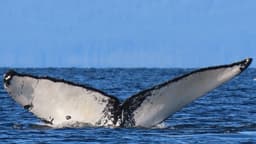Home / Environment / Latinos Power America's Seafood Industry
Latinos Power America's Seafood Industry
21 Nov
Summary
- Latinos are crucial workers in the U.S. seafood industry.
- Overfishing threatens global fish stocks, with 35.5% exploited.
- Latino expertise is vital for ocean conservation decisions.

Latinos form the backbone of the United States seafood industry, playing a vital role in bringing fish from the ocean to consumers' plates. Their extensive involvement in catching, processing, and distributing seafood underscores their economic importance. As World Fisheries Day approaches, it serves as a crucial reminder of our reliance on healthy marine ecosystems and the seafood sector.
The seafood industry is a major economic driver for the U.S., but it faces severe threats from overfishing, pollution, and climate change. Globally, 35.5% of fish stocks are being overexploited, a critical issue that demands urgent attention. The vastness and inaccessibility of the ocean often disconnect people from these realities, diminishing awareness and hindering action.
Incorporating Latino perspectives and lived experiences is paramount for effective ocean conservation and sustainable fisheries management. Their deep connection to the ocean, often stemming from livelihoods and cultural traditions, provides invaluable insights. Empowering Latino leadership ensures that decisions made about ocean health and the seafood industry consider the people most affected and possess the essential knowledge for creating lasting solutions.



